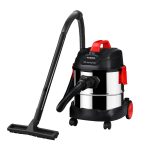Last Updated on December 23, 2022 by
Food packaging is a critical part of any kitchen. It helps protect food from being damaged by the elements and helps to promote consumer preference for your products. There are a few things you should consider when creating your food packaging.
Materials And Cost
The first step to selecting the right material for restaurant food packaging is choosing the right materials. There are many options available for materials such as plastic, cardboard, and aluminum foil. Each material has its pros and cons.
- Cardboard/paper is recyclable, economical, customizable printing, and strong when folded correctly. Most delivery services use corrugated cardboard boxes, or round paper bowls with lids, which provide heat insulation and regulate temperatures. To reduce heat loss, the box is sealed tightly and has small holes to allow air to escape. This prevents condensation from forming and keeps the pizza from becoming soggy.
- Plastics offer strong protection and excellent food safety. Plastics can also retain moisture, which can lead to soggy dishes. Plastics are also not very eco-friendly.
- Aluminum/foil is durable, sealable, and non-absorbent. It can also hold heat well, making it ideal for food like burritos or grilled sandwiches. It isn’t microwavable, and it is also quite expensive.
These facts make it clear that there is no single right way to package restaurant food. You may need to use multiple packaging options for certain dishes. This is because the food’s quality can be compromised during transit.
Safety concerns
Food safety and hygiene are important aspects of choosing the right restaurant packaging. Restaurants are still being affected by COVID-19, so food safety is even more important.
These are some tips to ensure your packaging is safe for customers.
- Follow all food safety procedures for temperature control, cross-contamination prevention, storage, hand-washing, sick workers, and food storage.
- Increase frequency of cleaning and disinfecting high-touch surfaces such as areas where food is packaged and delivered for takeout or delivery.
- When handling ready-to-eat food, you should use suitable utensils like deli tissue and spatulas.
- When possible, use disposable containers and packaging.
- Clean, disinfect, and properly clean coolers and insulated bags that are used for food delivery.
- You can use tamperproof boxes to deliver your packages or add tamper-evident labels to alert the customer that an order has been tampered with.
- Include instructions for how to handle food and packaging in each delivery and takeout order. Customers should take out the food from their original containers or takeout bags and recycle or dispose of them properly. After removing the packaging, customers should wash their hands with soapy water for at least 20 seconds. Finally, clean up any surfaces that had food unpacked, such as countertops and other surfaces.
Food Packaging Trends
These are the top four trends that you should consider when designing or redesigning your packaging.
1. Sustainable Packaging
Customers were more aware of environmental issues than ever before the COVID-19 pandemic. They demanded transparency from restaurants and companies about their products.
Although COVID-19 may have put some environmental issues on the back burner for now, it is still a hot food trend to understand a food source. Customers want to know the origin of their food, its ingredients, and how it was made. As a result of increased pressure on corporate social responsibilities, customers are more sensitive to companies that don’t align with their values.
This means single-use plastics are out and anything that cannot be recycled is out. Biodegradable, recyclable, and even edible packaging are now in.
2. Minimalistic packaging
Minimalist trends are everywhere: simple websites, book covers with less clutter, and yes, even packaging that is free of unnecessary materials and cluttered designs.
Burger King was the first major restaurant brand to adopt this minimalistic aesthetic. It rebranded its takeout packaging with modern, minimalistic designs. McDonald’s and other big brands followed McDonald’s lead and ditched cluttered designs that used multiple fonts and colors.
3. Personal Packaging
Many brands personalize their packaging to stay ahead of the rest. This trend is not surprising. Personalization has many benefits for businesses. It allows staff to learn the names of regulars and create stronger, more personal connections with customers. Restaurants can also benefit from word-of-mouth marketing by sharing the packaging on social media.
Personalization is also a great way to ensure that customers are always at the top of your mind. You would feel extra special if you were sent a personalized note each time you ordered food.
4. Convenient Packaging
Customers have busy lives today that require convenience. This convenience is a major factor in restaurant takeout. Customers want to be able to order and eat food anywhere they are, whether it’s in the comfort of their homes or on the move.
Your food delivery packaging should be easy to use. It should be light, portable, and resealable so it can be used multiple times.
Brand personality
Takeout packaging is a great place to start if you are stuck on how to market your restaurant. This is especially true as consumers increasingly order takeout through third-party apps instead of ordering directly from restaurants.
Your branding can be used on takeout packaging to help customers associate the food with your restaurant and not the best delivery service. A stronger brand image will make it more likely that the customer will order from you in the future.
You should include your logo or company name on the packaging to make sure your brand is easily identifiable by anyone who views it.
Conclusion
In conclusion, it is important to take into account all of the factors when planning your food packaging. There are many different types of food packaging, and each has its own advantages and disadvantages. However, one thing that should always be considered is safety. Brand personality is also important, so it is important to ensure that the food packaging is both effective and attractive.
Apart from this if you are interested to know more about The Benefits of Stickers to Enhance Packaging then visit our Business category


























